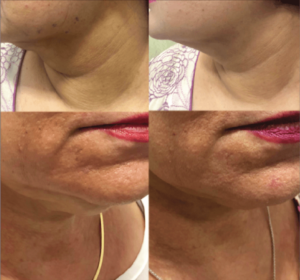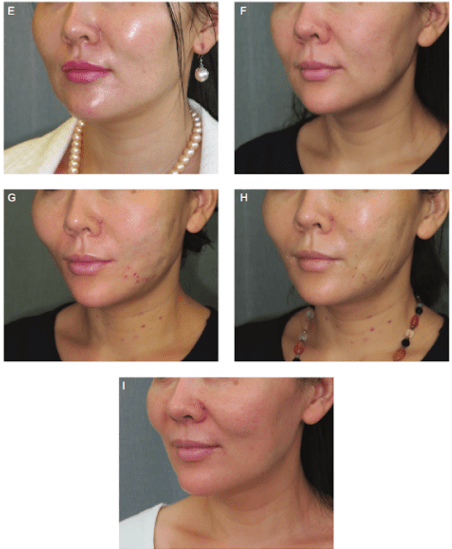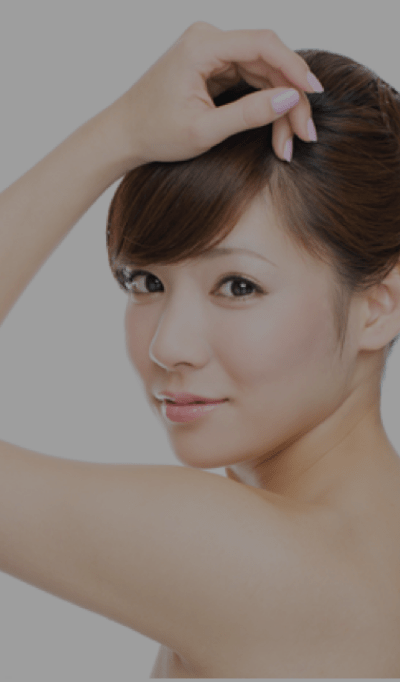
Throughout life, the inevitable process of aging occurs. Our bodies will change over time and begin to show the signs of aging. A common feature of someone who is aging is sagging of the skin, both throughout the body and face. In the past, many invasive surgeries have been created as an attempt to reverse the effects of time. However, many people find that they do not have the time to invest in a lengthy recovery, nor do they wish to undergo surgery. If this is the case for you, you may be the ideal candidate for a Thread Lift.

What is a Thread Lift?
A thread lift or threading face lift is a simple procedure that involves lifting the skin using sutures that were traditionally only used for surgery but maintaining them hidden under the skin’s surface. It is often referred to as a non-surgical face lift. With the developed techniques, this can be used to offer benefits similar to a facelift, with advantages such as minimal downtime, no scarring, reduced cost, less invasive, and less postoperative complications. This can be an excellent alternative if you are searching for lifting or rejuvenation of the skin.
Where can you have a thread lift?
Thread lifts are considered as non-invasive facelifts generally; therefore, some common areas for the procedure to be done are:
- Lower face area and jawline
- Mid-face and cheek area
- Peri-ocular area (eye area)
- Neck area
However, thread lifts can also be extended to the body for areas that tend to show significant sagging, such as:
- The inner thighs
- The inner armpits
- The butt
Some of the most popular areas for most patients include;
- neck thread lift
- nose thread lift
- lip thread lift
- brow thread lift
- eye thread lift
- thread butt lift
What happens during a thread lifting procedure?
As most procedures should always begin, you will have a consultation with your surgeon about whether you are an appropriate candidate and all your treatment options. If your surgeon agrees that this is the best option for you, then you can move forward to the initial steps of the treatment.
- Some of the main precautions prior to treatment include:
- No smoking.
- No drinking alcohol 48 hours before the treatment.
- No make-up or creams should be applied on the day of the procedure
1. First, the appropriate thread must be determined.
This depends mainly on your current skin situation as well as the region you want to have the treatment done in. The threads can be divided into three categories:
- Absorbable
- Options: Polydioxanone thread (PDO), Silhouette Soft thread, and fine thread with bi-directional absorbable cone.
- Notes: POD is often referred to as a Korean Face Lift or POD Thread Lift, due to its creation by a Korean surgeon. It is considered as the most common option nowadays. If you choose to have the procedure done in Korea, you are guaranteeing the best results in the world as well as extremely competitive prices. PDO is also associated with improved circulation and collagenization, which improves the texture of the skin and corrects mild wrinkling by producing new collagen. In addition, it helps with the activation of fibroblasts, which will provide more elastin. Specifically, the effect of polydioxanone (PDO) was also found to encourage the body to create natural hyaluronic acid.
2. Smooth/Non-absorbable
- Barbed; Bi-directional (APTOS thread, Woffles thread) or Unidirectional (Contour thread, Silhouette lift thread) for longer sutures, cogged (for shorter sutures).
Notes: Bi-directional is less likely to move because of support from both ends, though it is not anchored. Uni-directional is easier to fix if there is asymmetry since they are anchored.
- Non-Barbed
Notes: Easier to fix if there is asymmetry.
It should be noted short sutures include PDO, Plain, Screw, Spiral, and Cog thread, while long sutures include APTOS, Silhouette Lift, Silhouette Soft, Woffles or Contour thread.
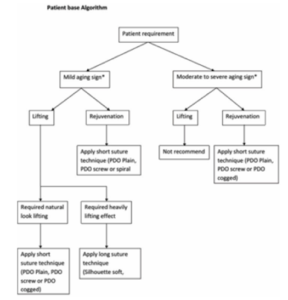
2. Prep before treatment:
a numbing cream may be used for shorter sutures, while local anesthesia will be used for longer sutures.
3. Treatment:

Depending on the exact method you chose, this will vary slightly, but on a general note, the thread will be laced under the skin in the desired area of treatment. This allows the thread to be invisible. The procedure itself should last anywhere from 30-60 minutes, depending on how many areas you are treating, and the extent of sagging. The more complicated the case, the more threads that will have to be used.
Who is a good candidate to have the thread lifting procedure?
Fat Grafting
This procedure can be done on both older and younger adults. The principal patients that will benefit from this procedure are adults that have less disrupted skin elasticity and appropriate facial volume. Significant factors to consider for this treatment are:
– Age
– Health
– Degree of skin laxity
– The thickness of the skin
– Adequacy of facial volume
Thread Lift Recovery
This is an outpatient procedure; therefore, you would be discharged the same day of your treatment. Depending on the kind of thread and suture length you opted for, you may experience some swelling and bruising. Sleeping with the head slightly elevated will also help with swelling. In this case, it is recommended to apply a cold compress for the first day or two after treatment to help swelling decrease.
You should avoid movement of the area (such as smiling for a facial thread lift). If you must sneeze or cough, try to hold the face to support the threads for the first week. You should not put make-up on for 3-5 days after the procedure or shave for at least ten days. Try to follow a soft or liquid diet, but avoid straws also to avoid too much movement of the facial muscles. You should avoid smoking and drinking alcohol, if possible.
Thread Lift Before and After
If you have been searching for an alternative method to address any sagging skin, but are hesitant to have a full procedure done or have no time for the recovery that it would require, a thread lift may be the best choice for you.
There are a variety of techniques, as well as many areas that can be addressed. Make sure to speak to a board-certified surgeon who can help you create the best plan of action for your specific needs. PDO remains the top choice for many patients who chose to move forward with the treatment.
As recommended earlier, coming to Korea can both guarantee results due to its creation and refinement in the country as well as the competitive prices that the plastic surgery market offers there currently. If you choose to come to Korea for your procedure, feel free to contact Seoul Guide Medical, who can connect you to the top specialists in the country.
FAQ :
How long does a thread lift last?
From most research, a safe assumption is that this procedure is not permanent, mainly because you cannot stop the natural process of aging. However, results can be considered long-lasting for appropriate patients, and due to the ease of this procedure, having repeat treatments can easily be done. 1-9 years was the general longevity of observable results. For patients that are younger with thicker skin and appropriate facial volume, 3-4 years was the average. In contrast, older patients with severe sagging reduced elasticity, and lack of volume had visible results for 1-2 years.
What is a thread lift procedure for the face?
As mentioned previously, a thread face lift can be extended to the face as well as other areas. Face areas are typically divided into lower face area and jawline, mid-face and cheek area, peri-ocular area (eye area), and the neck area.
Can I exercise after a thread lift?
You should wait around 1-3 weeks after the treatment to resume any vigorous exercise, your surgeon will advise you on how long exactly you should expect. This is to prevent your healing from becoming prolonged. Exercise can increase the heart rate, which causes blood flow to also increase to the area of treatment, which in turn can cause swelling.
Can you fly after a thread lift?
You should avoid flying 48-72 hours after your procedure. The air pressure in the air is larger than the ground. Therefore it is easy to cause blood pressure fluctuations. It can also potentially cause an infection due to the splitting of the wound, prolonging the recovery period.
